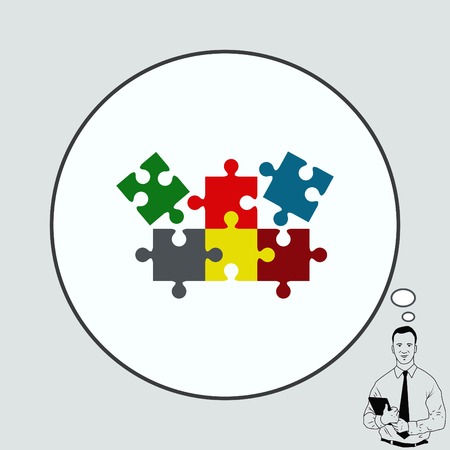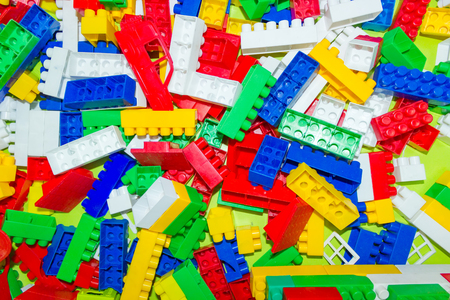Introduction to Play as Therapy
In the heart of British family life, play is more than just a pastime—it is a cherished tradition and an essential ingredient in childhood development. Whether it’s gathering around the dining table for a classic board game or building intricate worlds from colourful Lego bricks on a rainy afternoon, these familiar activities are woven into the fabric of everyday life across the UK. However, beyond their entertainment value, these beloved games and construction sets hold untapped potential as therapeutic tools. By harnessing the innate joy and creativity found in Lego, board games, and construction play, therapists and families alike are discovering innovative ways to support emotional wellbeing, social skills, and cognitive growth. This article explores how these British family favourites can be thoughtfully integrated into therapeutic settings—bridging comfort with clinical practice to make therapy more accessible, engaging, and effective for children and families.
Lego Therapy in the UK: Building Communication and Teamwork
Lego has long been a beloved staple in British households, gracing living room floors and classroom tables alike. Its colourful bricks are more than just playthings; for many families and educators across the UK, Lego represents an opportunity for children to learn essential life skills in an engaging, hands-on way. This popularity has naturally led to the rise of Lego-based interventions, such as structured Lego Therapy sessions, now widely implemented in both mainstream and special educational settings throughout Britain.
Structured Lego Therapy sessions, often run by trained facilitators or school staff, provide a safe and supportive environment where children work together to build models. These sessions typically assign specific roles—such as builder, supplier, and engineer—to encourage turn-taking, listening, and clear communication. The approach is particularly valued for supporting children with social communication needs, including those on the autism spectrum, but it has proven beneficial for all pupils.
Key Benefits of Lego Therapy in British Schools
| Skill Developed | How It’s Fostered in Sessions | Example from UK Settings |
|---|---|---|
| Communication | Children must describe pieces and instructions clearly to teammates | Pupils at a London primary school take turns giving verbal directions while building a shared model |
| Teamwork | Each participant adopts a role that requires interdependence | Scottish SEN units report increased peer cooperation using the “engineer-supplier-builder” model |
| Problem-Solving | Groups face construction challenges that require joint decision-making | A Manchester therapy group collaborates to adapt their designs when pieces are missing |
| Emotional Regulation | Learning to cope with frustration during tricky builds or disagreements | Pupils reflect on feelings after a session using emotion cards in Welsh schools |
Widespread Adoption Across the UK
The use of Lego Therapy is supported by organisations such as the National Autistic Society and featured in many local authority SEND strategies. From after-school clubs in Yorkshire to NHS-funded interventions in Cornwall, its reach continues to grow. British practitioners appreciate how Lego’s familiarity lowers barriers to participation, making it easier for children—and even parents—to engage with therapeutic goals without the pressure of formal counselling settings.

3. Bringing Board Games to the Therapy Table
Across Britain, board games have long been a staple of family gatherings, rainy afternoons, and festive holidays. From the strategic routes of Ticket to Ride: Europe to the property-trading drama of Monopoly, these classic tabletop experiences are more than just a means of entertainment—they offer therapists unique opportunities to foster emotional growth in children and young people.
British Board Game Classics in Focus
Games such as Cluedo, Scrabble, and Game of Life are household names that British families know well. Therapists draw on this familiarity by introducing these games into sessions, making children feel at ease with something recognisable. For example, Cluedo’s deductive gameplay can gently encourage social reasoning and perspective-taking, while Scrabble provides moments to practise patience and frustration tolerance as children wait their turn or grapple with challenging letter tiles.
Adapting Play for Emotional Regulation
Board games naturally generate excitement, disappointment, and competition—ideal conditions for practising emotional regulation. Therapists may subtly tweak rules to support specific goals. A therapist might use Monopoly’s inevitable setbacks (like landing on Mayfair with a hotel) as teachable moments for managing disappointment, or introduce collaborative variants where children work together against the game rather than each other. These adjustments help children recognise their emotions, express them safely, and try out coping strategies in real time.
Cultivating Patience and Building Resilience
The turn-based structure of board games is particularly effective for developing patience. Children learn to wait for others, listen actively, and plan ahead—skills transferable beyond the therapy room. Furthermore, games that involve elements of chance (such as rolling dice or drawing cards) help normalise setbacks and failure, reinforcing resilience as children realise they can persevere despite losing a round or making mistakes. Through repeated play in a supportive setting, these lessons become embedded in everyday behaviour.
This intentional adaptation of beloved British board games transforms familiar pastimes into powerful therapeutic tools—helping young people manage their feelings, develop essential life skills, and build confidence for challenges beyond the tabletop.
4. Construction Play: From Garden Sheds to Therapy Rooms
The British have long held a fondness for building and tinkering, whether it’s crafting elaborate dens in the garden, assembling flat-pack furniture with a cuppa in hand, or partaking in model railway societies. This cultural affinity for construction play has found its way from family homes and garden sheds into therapeutic settings across the UK. Therapists are now actively harnessing these beloved activities to support children’s development in several key areas.
Therapeutic Benefits of Construction Play
Construction activities, such as building models, using blocks, or even engaging in simple DIY projects, can be powerful tools in therapy. By introducing familiar and enjoyable tasks, therapists are able to create a comfortable environment that encourages children to participate and express themselves. The structured yet creative nature of construction play supports multiple developmental domains.
Areas Supported by Construction Play
| Skill Area | How Construction Play Helps | Example Activities |
|---|---|---|
| Fine Motor Skills | Improves dexterity and hand-eye coordination through manipulation of small pieces and tools. | Assembling Lego sets, threading nuts and bolts, stacking wooden blocks. |
| Planning & Sequencing | Encourages logical thinking by requiring children to follow steps or instructions to complete a project. | Building model kits, following blueprint instructions, creating marble runs. |
| Self-Esteem & Confidence | Boosts confidence as children see tangible results from their efforts, fostering a sense of achievement. | Completing a birdhouse, displaying finished creations at home or school. |
Bringing Familiarity into Therapy Rooms
Therapists often incorporate items and materials that feel recognisably ‘British’—from classic Meccano sets to recycled household items—making sessions relatable and engaging. By doing so, they tap into positive associations children already have with building at home or with family. This approach not only enhances participation but also helps bridge the gap between therapeutic goals and everyday life skills.
5. Integrating Family Favourites into Everyday Therapy
Bringing play-based tools such as Lego, board games, and construction play into everyday therapy can be both rewarding and effective when thoughtfully adapted to suit British families. For therapists and parents alike, it’s crucial to create environments where these familiar activities become bridges to learning, emotional growth, and connection. The key lies in weaving therapeutic intentions subtly into the fabric of play, ensuring sessions remain enjoyable while also supporting development.
Start with Familiarity
British families often have their own favourite board games—whether it’s the friendly rivalry of Monopoly or the strategic thinking encouraged by Cluedo. Therapists should take time to ask families about their preferences and traditions. By using familiar games, children are more likely to feel at ease, allowing genuine expression and engagement. Parents can extend this by setting aside a weekly ‘family game night’, gently incorporating therapeutic goals such as turn-taking or emotion labelling within the flow of play.
Practical Tips for Home Use
For parents, it’s important not to over-structure playtime. Let your child lead with their imagination: perhaps a Lego castle becomes the stage for discussing bravery or teamwork. Use open-ended questions like “How did you decide what to build?” or “What would you change next time?” This approach encourages reflection and communication skills without feeling clinical or forced. Board games can also support social-emotional learning—celebrate wins gracefully and discuss feelings around losing, normalising both success and disappointment in a safe space.
Adapting for Clinical Settings
Therapists in the UK can make sessions relatable by integrating local references—perhaps using Lego to build iconic British landmarks like Big Ben or the Angel of the North as a way to spark stories about home, identity, or culture. For group work, select cooperative board games that require teamwork rather than competition, promoting peer interaction in a non-threatening way. Consider keeping a rotating selection of classic British games in your toolkit to maintain novelty and engagement.
Ensuring Relevance for Every Family
No two families are the same, so flexibility is vital. Therapists should remain sensitive to cultural nuances—perhaps swapping out certain themes or rules in games that don’t resonate with a particular family’s values. Invite parents into the process: encourage them to share stories from their own childhood play experiences, fostering intergenerational connection and making therapy feel like an extension of family life rather than an external intervention.
Ultimately, integrating beloved play activities into therapy doesn’t mean reinventing the wheel—it means recognising the profound developmental power already present in British homes. With thoughtful adaptation and collaboration between therapists and parents, every game night or building session has the potential to nurture resilience, communication, and joy.
6. Case Studies and Success Stories
Across the UK, families and practitioners have found that using familiar play-based tools such as Lego, board games, and construction sets can create remarkable breakthroughs in therapy. Below are a selection of genuine case studies highlighting how these approaches have made a difference for British children and their families.
Lego Therapy in a London Primary School
In a diverse primary school in South London, a speech and language therapist introduced Lego Therapy groups to support children with social communication difficulties. Over a term, pupils who initially struggled to work together began to show improvements in turn-taking, listening, and teamwork. One parent reported: “My son now talks about his friends at home. He used to find group activities overwhelming, but now he looks forward to Lego club every week.”
Board Games Bringing Families Together in Manchester
A family support worker in Manchester began running Saturday afternoon board game sessions for families coping with parental separation. Using classic British favourites like Cluedo and The Game of Life, families were encouraged to communicate openly and solve problems together. Feedback from one parent noted: “It was the first time wed all sat down together without arguments. The games helped us laugh again.”
Construction Play Supporting Emotional Regulation in Bristol
An occupational therapist working with autistic children in Bristol used construction play—specifically Meccano sets—to help children explore emotions and develop coping strategies. Through building projects, children practiced patience and resilience when things didn’t go as planned. Parents observed reduced outbursts at home, with one commenting: “He’s started saying ‘let’s try again’ instead of giving up straight away.”
Insights from Practitioners
British therapists consistently report that integrating play-based tools into their practice not only increases engagement but also allows children to express themselves in ways traditional therapy may not facilitate. Whether it is through collaborative Lego builds or the gentle competition of a board game, these familiar activities offer safe spaces for emotional growth.
A Growing Movement
As awareness grows, more schools and community centres across the UK are adopting these approaches. The positive outcomes—improved communication, stronger family bonds, and enhanced self-regulation—are echoed by professionals and parents alike. These real-world stories demonstrate that turning much-loved British pastimes into therapy tools is far more than a novelty; it’s an evidence-informed strategy making tangible changes in young lives.


